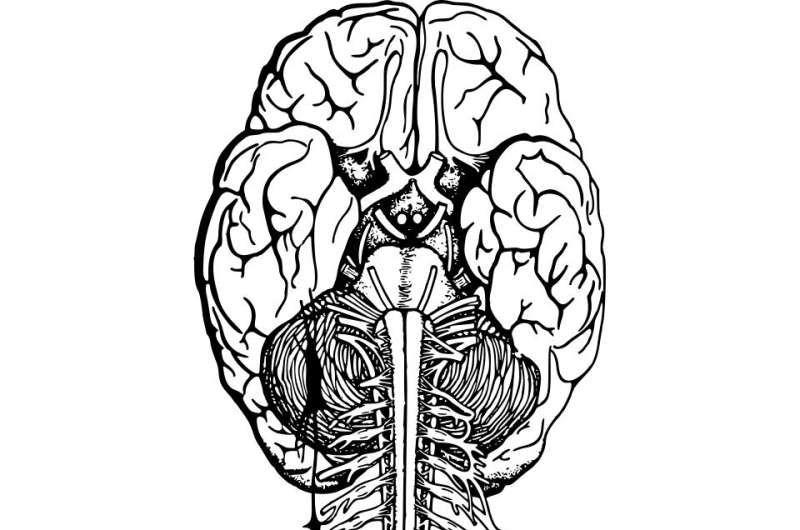This article has been reviewed according to Science X's editorial process and policies. Editors have highlighted the following attributes while ensuring the content's credibility:
fact-checked
trusted source
proofread
Predominantly young Asian male laughing gas users show neurological side effects, UK case series shows

The largest clinical case series to date of recreational users of nitrous oxide, popularly known as laughing gas, has found a predominance of young men of Asian ethnicity among those with neurological side effects who were seen at hospitals in three major cities in England.
This may indicate genetic susceptibility to the nerve damage caused by exposure to the gas, or other, as yet unidentified, social factors, suggest the researchers by way of an explanation for the finding, published online in the Journal of Neurology, Neurosurgery & Psychiatry.
Nitrous oxide is widely used as an anesthetic in people and animals, and as a painkiller in medicine and dentistry. It is the second most commonly used recreational drug among 16 to 24-year-olds in the UK, say the researchers.
Its use is associated with spinal cord and peripheral nerve damage (myeloneuropathy) in some people, but this is mostly based on small case series.
To strengthen the evidence base, the researchers describe a series of 119 young people with probable (39) or confirmed (80) myeloneuropathy caused by laughing gas use, all of whom were seen at hospitals in three of the UK's largest cities: London (56), Birmingham (35), and Manchester (28) between 2014 and 2022.
Nearly half these cases (57) were seen within the last 12 months of the study period.
Overall, the average age of those requiring treatment was 22, but ranged from 14 to 39, and three out of four were male, although a third of the patients in the London hospitals, which covered the east of the city, were female.
London also featured the highest proportion of drinkers and smokers, excess drinkers, and users of other recreational drugs, such as cannabis and cocaine.
Most patients were of Asian or Asian British ethnicity (57%; 68), with the highest proportion in London (73%; 41). Black patients made up 7.5% of the total; mixed race 6%, and white 19%. In one in 10 cases, ethnicity wasn't recorded/known.
Given the census data on ethnicity for the three areas, "Asian or Asian British individuals presenting with [nitrous oxide]-related harm appear to be over-represented relative to the proportion of the population that is Asian or Asian British in each region," note the researchers.
This "may highlight genetic, dietary, or nutritional predispositions to neurological damage from [nitrous oxide] exposure, but also may indicate social circumstances predicating use," they suggest, adding that these issues warrant further investigation.
The most common presenting symptom (101; 85%) was pins and needles (paresthesia) in the arms and legs, caused by spinal cord and peripheral nerve damage, seen on MRI imaging.
The legs tended to be more commonly affected than the arms, and neurological examinations revealed unsteady walking (gait ataxia) in 80 patients.
Additional symptoms included bladder (21 patients) and bowel (18) difficulties, poor balance or involuntary arm movements (pseudoathetosis) (13), Lhermitte's sign—an electric shock sensation that runs down the spine on moving the neck—(10), and erectile dysfunction (7).
Other less common symptoms included memory and speech problems, visual disturbances and nausea/vomiting.
The quantity of use was recorded in two thirds of patients (78). Twenty said they used larger cylinders of 600 g, which contain around 75 times the amount of a single 8 g canister.
Average weekly consumption amounted to 318 canisters, but ranged from one canister to 35 cylinders—equivalent to roughly 2,800 canisters. Three out of four (76%, 91) patients said they were regular users while 14 (12%) said their use was sporadic.
Weekly nitrous oxide consumption was associated with the presence of blood markers indicating that vitamin B12 wasn't functioning normally, the cause of the nerve damage. B12 injections are the main treatment, although these probably only work if nitrous oxide use is discontinued, say the researchers.
Follow up information was only available for 38 patients, but only four had no ongoing symptoms.
This is a case series, covering only certain areas of three cities in the UK, and may therefore not be representative of all young laughing gas users.
But, comment the researchers, "Preventable neurological harm from [nitrous oxide] abuse is increasingly seen worldwide. Ease of access to canisters and larger cylinders…..has led to an apparent rise in cases of [nitrous oxide]-myeloneuropathy in several areas of the UK."
They add, "Manufacturers and sellers of nitrous oxide should be held accountable for the apparent increase in harm through policy implementation and/or legislation."
[Since this research was accepted, the UK government has moved to ban retail sales of nitrous oxide].
More information: Nitrous oxide-induced myeloneuropathy: a case series, Journal of Neurology Neurosurgery & Psychiatry (2023). DOI: 10.1136/jnnp-2023-331131




















